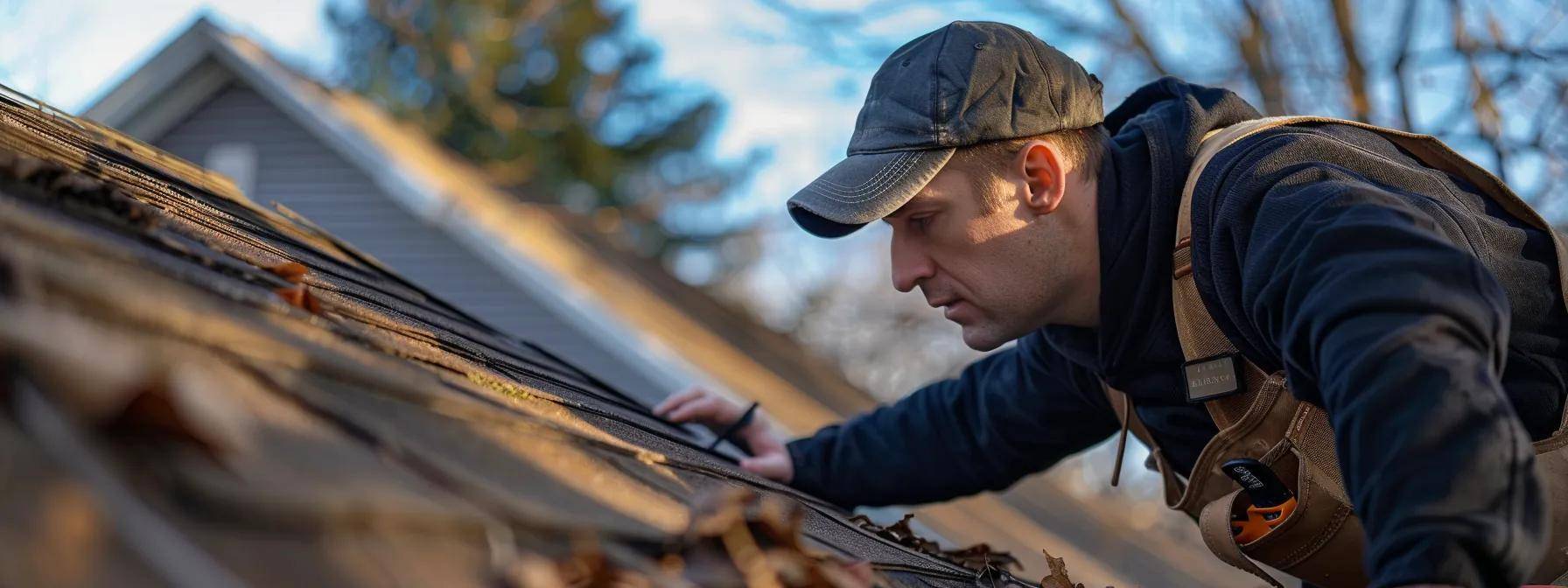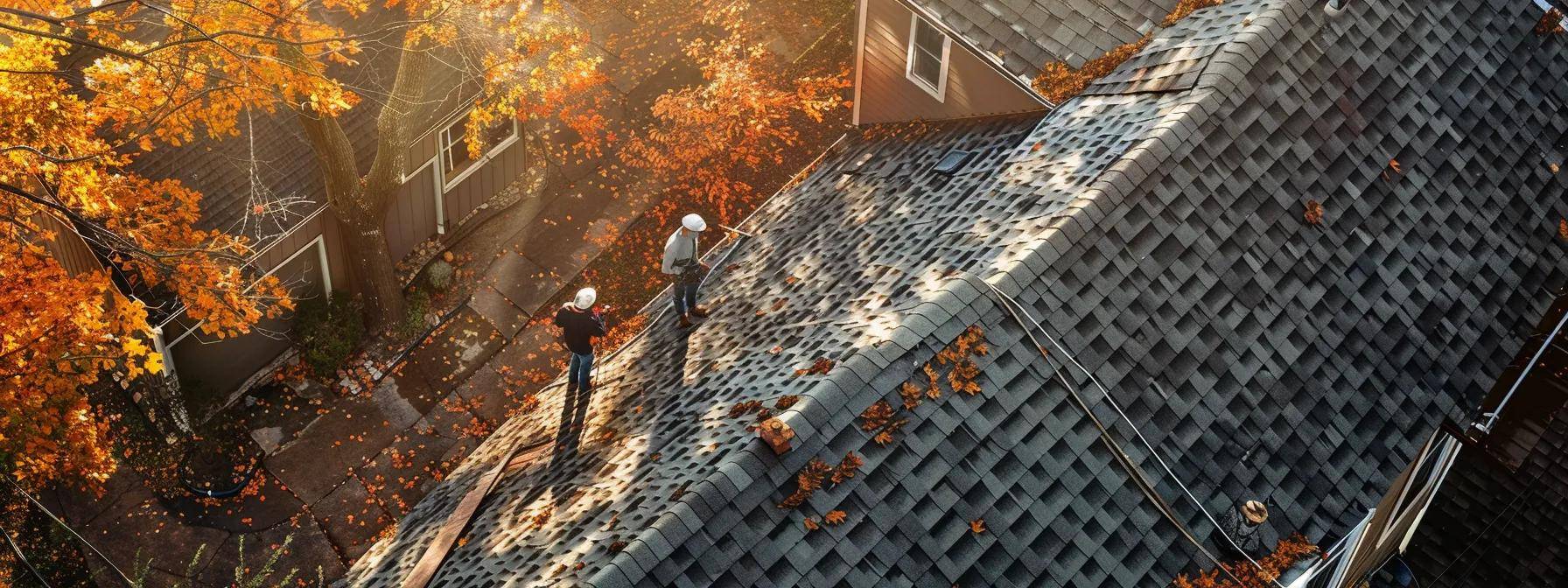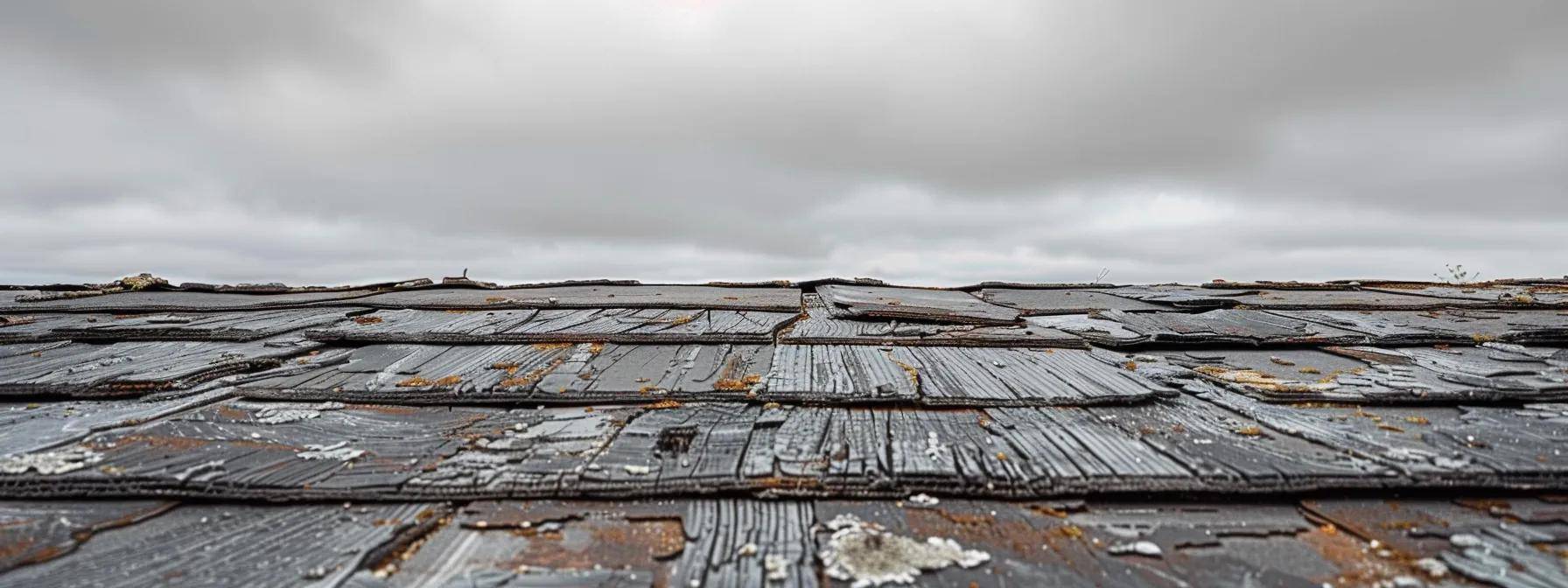Seasonal Roof Maintenance Tips From Leading Massachusetts Roof Contractors for Homeowners and Businesses
Maintaining a quality roof is essential for ensuring that Massachusetts homes stand the test of time against harsh regional weather conditions. Homeowners and businesses alike face seasonal changes—from the icy grip of winter to the humidity of summer—that can affect a roof’s durability and performance. This guide explains why seasonal roof maintenance is essential, the key tasks for each season, and how professional roof contractors, including dd construction ma, help protect your investment. In Massachusetts, where temperature extremes and unpredictable weather are constant threats, neglecting roof maintenance can lead to significant repair costs and structural damage.
The article details the impact of Massachusetts’ diverse climate on roofing systems and explains the benefits of regular roof inspections and maintenance. It highlights the importance of timely spring cleanups and repairs, protecting your roof during summer heat, essential fall practices to prepare for winter, and methods to prevent winter conditions like ice dams. Homeowners will learn how addressing minor issues early reduces long-term financial and structural burdens.
At DD Construction, our approach focuses on top-quality workmanship and durable materials for lasting home improvements. Our certified Massachusetts roofers have extensive experience with various roofing types—from asphalt shingles to slate—and ensure every roofing system meets the highest standards of quality and durability. This guide also discusses the costs and benefits of preventative maintenance programs to help you make informed decisions for your home or business.
With clear, step-by-step advice and practical checklists, this article is designed to empower property owners across Massachusetts to take charge of their roof’s health, minimize unexpected repairs, and preserve the integrity and value of their property. Let’s explore the essential tasks and expert tips for every season to keep your roof performing its best all year round.
Why Is Seasonal Roof Maintenance Essential for Massachusetts Homes?
Seasonal roof maintenance is essential because Massachusetts’ climate exposes roofs to extreme temperature variations, heavy precipitation, and high winds—all of which contribute to gradual wear and damage. Regular maintenance prevents small issues from escalating into costly repairs or complete roof replacement. Addressing early signs of damage also ensures better energy efficiency and protection against water leaks that can compromise a building’s interior structure.
How Does Massachusetts’ Climate Affect Your Roof Year-Round?
Massachusetts experiences a variety of weather patterns. In the winter, heavy snow, ice, and freezing temperatures can cause frost damage, cracked shingles, ice dams, and water infiltration. In spring, rain and fluctuating temperatures may worsen problems like deteriorating flashing and poor sealants. During summer, prolonged heat and humidity stress roofing materials, causing expansion, contraction, and algae growth. In the fall, dropping temperatures and increased moisture can damage loosely attached shingles and flashing.
These stresses can reduce a roof’s overall lifespan. Regular seasonal check-ups allow for early detection of weather-induced problems, enabling prompt repairs and protective treatments.
What Are the Benefits of Regular Roof Inspections and Maintenance?
Regular roof inspections and maintenance help identify potential issues before they escalate, saving on costly repairs. Upkeep improves energy efficiency by preserving insulation integrity and reducing air leaks. Well-maintained roofs also enhance aesthetic appeal and property value, meet safety standards for insurance claims and warranties, and support environmental sustainability by reducing waste and premature roof replacement.
How Can Professional Roof Contractors Help Protect Your Investment?
Professional roof contractors bring expertise, quality materials, and advanced techniques to extend a roof’s lifespan. They conduct thorough inspections using state-of-the-art technology to detect hidden damage and are skilled in repairing leaks, replacing damaged shingles, resealing flashing, and cleaning gutters efficiently. Their adherence to building codes and warranty guidelines makes them the trusted choice for maintaining a roof’s structural and aesthetic integrity. By hiring expert contractors, homeowners also benefit from long-term service programs that offer scheduled inspections, preventive maintenance, and rapid emergency repair responses.
What Are the Key Spring Roof Maintenance Tasks in Massachusetts?

Spring is a critical time to examine and repair roof damage incurred during the harsh winter months. As the environment warms, it becomes easier to spot structural issues or discoloration caused by moisture and ice damage. A comprehensive inspection at the start of the season ensures that repairs are addressed immediately to prevent further damage.
How to Perform a Thorough Spring Roof Inspection Checklist?
Begin with a visual evaluation of all roofing components. Examine shingles for curling, cracks, or missing sections and inspect the flashing around vents, chimneys, and skylights. Look for discoloration or moss growth as signs of moisture exposure. Check gutters and downspouts for winter debris blockages and remove any ice dam remnants. Safely assess hard-to-reach areas with a ladder, and inspect your attic for water leakage, discoloration, or mold. Document identified issues with photographs to guide necessary repairs and for warranty records.
Why Is Gutter Cleaning Critical in Spring?
Gutter cleaning is vital in spring because it prevents water pooling on or near the roof. Winter debris such as leaves and twigs can clog gutters, causing water to back up and seep under the shingles, which may damage both the roof and the home’s foundation. Regular cleaning—and sometimes professional power washing—ensures that gutters channel rainwater away effectively and reduce the risk of ice dam formation in subsequent winters.
How to Identify and Repair Winter Roof Damage Early?
Look for obvious signs of winter damage such as cracked shingles, missing flashings, and discoloration from ice melt. Check roof edges and joints for any lifting or misalignment caused by thermal expansion and contraction. Once damage is detected, consult a professional roofer immediately. Minor repairs like replacing a few shingles or resealing gaps can prevent water infiltration and further structural damage, while early intervention can also enhance insulation and reduce energy expenses during the warmer season.
What Preventative Measures Prepare Your Roof for Summer?
To prepare for summer’s high temperatures and intense sun, apply a reflective roof coating to reduce heat absorption. Reseal vulnerable areas like flashing and joints to block moisture infiltration during sudden summer storms. Trim overhanging tree branches to avoid physical damage and debris accumulation. Professional roof contractors can conduct detailed inspections and suggest treatments such as algae-resistant coatings to maintain roof integrity during the heat and humidity.
How to Protect Your Roof During the Hot Massachusetts Summer?
The Massachusetts summer brings elevated temperatures, prolonged heat, and intense UV radiation—all of which can accelerate roof deterioration. Protecting your roof during summer requires proactive measures to enhance durability, reduce thermal stress, and prevent issues like heat damage and algae growth.
What Are Common Summer Roof Problems Like Heat Damage and Algae?
In summer, heat damage can appear as blistering, warping, and premature aging of roofing materials such as asphalt and shingles. High temperatures may cause materials to expand and contract, resulting in cracks and loosened granules. Standing water from heavy rains can lead to algae and mold growth, compromising the roof’s waterproofing and reducing its structural integrity.
How to Safely Remove Algae and Mold From Roof Surfaces?
To remove algae and mold safely, use a gentle, environmentally safe cleaning solution designed for roof cleaning; avoid harsh chemicals that could damage the material. A soft-bristle brush or low-pressure spray system works best to prevent stripping protective granules from shingles. Allow the solution to sit briefly before rinsing gently. Professional roofers may recommend periodic fungicidal treatments to prevent recurrence while following manufacturer guidelines and best practices.
Why Is Roof Ventilation Important in Summer?
Proper roof ventilation is critical because it helps regulate attic and roof deck temperatures, preventing heat buildup that stresses roofing materials and increases energy consumption for cooling. A well-ventilated roof allows hot air to escape, reducing the risk of warped or cracked shingles and curbing moisture accumulation that could promote mold or algae growth. Contractors typically ensure a proper balance between intake vents near the eaves and exhaust vents near the ridge for optimal airflow.
How Often Should Roof Inspections Be Scheduled in Summer?
It is advisable to schedule roof inspections at least twice during the summer—once at the season’s start and again after any major storms. Regular inspections help detect damage from heat and sudden downpours and ensure that preventative measures like reflective coatings and proper vent maintenance remain effective. These inspections can be included in a comprehensive maintenance program offered by local roofing companies in Massachusetts.
What Fall Roof Maintenance Steps Prepare Massachusetts Roofs for Winter?

Fall is the ideal time for tasks that prepare your roof for winter. As temperatures cool and rainy periods become common, it’s critical to ensure your roof is free from debris and structural vulnerabilities. Proper fall maintenance helps prevent water leaks, ice dams, and other winter-specific problems.
How to Effectively Remove Leaves and Debris From Roof and Gutters?
Start by manually removing large clumps of leaves and branches from the roof, taking care not to damage the shingles. Then, thoroughly clean the gutters to prevent clogs that can cause water backup and leaks during heavy rain. For hard-to-reach areas, using a high-powered blower or hiring professional cleaning services can be beneficial. Regular cleaning not only maintains an attractive appearance but also minimizes moisture trapping that could freeze and cause additional damage in winter.
What Are the Best Practices for Inspecting Shingles and Flashing in Fall?
During fall inspections, carefully examine each shingle for signs of wear, curling, or missing granules. Ensure that flashing around vents, chimneys, and skylights is securely fastened and intact. Look for gaps, cracks, or rust in metal components that may allow water to seep in during winter storms. Document any issues for discussions with a professional contractor and for warranty records. A detailed fall inspection can ensure minor damages are remedied before harsh winter weather begins.
How to Seal and Repair Roof Vulnerabilities Before Winter?
Address any minor defects identified during fall inspections by applying roofing sealant to loose or cracked areas near flashing, valleys, and ridges. Replace isolated damaged shingles or reinforce areas with additional underlayment to prevent water infiltration. Professional roof contractors in Massachusetts recommend using high-quality sealants and ensuring repairs meet local building codes for maximum durability. These preventive measures reduce the risk of emergency repairs and ensure your roof remains structurally sound throughout winter.
Why Is Fall the Ideal Time for Professional Roof Maintenance?
Fall provides an ideal window for professional maintenance because it allows specialists to address winter-induced issues and apply preventative care well before freezing temperatures set in. Scheduling a professional inspection in fall ensures that hidden damage such as loose flashing or deteriorating sealants can be fixed with ample time for materials to cure. Contractors often complete repairs in more favorable weather conditions during fall, setting the stage for a safer, more secure roofing system in winter.
How to Prevent Winter Roof Damage and Ice Dams in Massachusetts?
Winter conditions in Massachusetts bring unique challenges such as ice dams and heavy snowfall, which can cause severe roof damage. Preventing these issues requires careful planning, proactive maintenance, and effective insulation strategies. Understanding the causes of ice dams and employing safe snow and ice removal methods can significantly reduce the risk of leaks, structural damage, and energy inefficiencies during the coldest months.
What Causes Ice Dams and How Can They Be Prevented?
Ice dams form when heat escaping from a poorly ventilated attic melts snow, and the meltwater refreezes at the colder eaves. This buildup prevents proper drainage, causing water to back up under the shingles and seep into the roof structure. Preventing ice dams involves improving roof and attic ventilation so that warm air escapes and the roof remains cool. Additionally, applying ice melt products or installing heat cables along the roof edge can help prevent large ice barriers. Regular maintenance and increased insulation are key strategies recommended by leading Massachusetts roofers.
How to Safely Remove Snow and Ice From Your Roof?
Safely removing snow and ice from your roof requires caution and the right tools. Avoid using metal shovels or harsh implements that can damage shingles; instead, use a roof rake with a soft edge designed for snow removal. Remove only loose snow and avoid excessive manual labor on icy surfaces. For heavy snow loads, it is advisable to hire professional services equipped with the proper tools to clear the roof safely without injury or additional damage.
Why Is Proper Attic Insulation and Ventilation Vital in Winter?
Proper attic insulation and ventilation are essential during winter to maintain consistent roof temperatures and prevent the melting and refreezing cycles that cause ice dams. Adequate insulation minimizes heat loss from the home’s interior, while proper ventilation allows cold air to circulate under the roof deck, preventing hotspots that accelerate ice buildup. A balanced attic environment also improves energy efficiency by reducing heating costs and ensuring that the roofing system withstands harsh winter conditions.
When Should You Call a Roof Contractor for Winter Repairs?
Homeowners should call a roof contractor for winter repairs as soon as any signs of damage—such as water stains on ceilings, visible ice dam buildup, or persistent shingle damage—are detected. Professional contractors can quickly assess the damage, provide emergency services, and recommend whether temporary fixes or full repairs are necessary. Early intervention prevents further structural damage and ensures repairs are completed before severe winter weather intensifies the issues.
What Are the Most Common Roofing Problems in Massachusetts and How to Spot Them?

Due to Massachusetts’ variable weather conditions and aging roofing materials, common problems include roof leaks, damaged shingles, deteriorated flashing, and structural weaknesses that become more apparent after seasonal extremes. Early detection through regular inspections is key to preventing minor issues from escalating into major repairs.
How to Recognize Signs of Roof Damage Early?
Look for early signs such as visible cracks, curling or buckling shingles, and missing granules. Be alert to discoloration around roof edges, damp spots in the attic, and unusual mold or algae patterns on the roof surface. Sagging or deformities along the ridge line or eaves may indicate underlying structural issues. Using a systematic inspection checklist during seasonal maintenance assists in identifying these warning signs for prompt repairs.
What Are Typical Causes of Roof Leaks and Structural Issues?
Roof leaks and structural issues in Massachusetts are typically caused by weather-induced stress, improper installation, and aging materials. Heavy snowfall, ice dams, and high winds can dislodge or deteriorate shingles. Inadequate attic ventilation and insulation further contribute to thermal stress, resulting in gradual damage that allows water penetration. Faulty or deteriorated flashing—especially around chimneys, vents, and skylights—is another common cause. Recognizing these causes enables homeowners and contractors to address vulnerabilities proactively, thereby reducing repair costs and extending roof life.
How Do Different Roof Types Respond to Seasonal Stress?
Different roof types respond uniquely to seasonal stresses in Massachusetts. Asphalt shingles may be more susceptible to UV damage and cracking in extreme heat, while they can also be prone to ice dam damage in winter. Metal roofs, although durable and energy efficient, can expand and contract with temperature variations, potentially loosening fasteners. Slate roofs offer superior longevity and weather resistance but require additional structural support due to their weight. Understanding these characteristics helps homeowners select materials and maintenance strategies best suited to their regional climate.
When Is Roof Repair Preferred Over Replacement?
Roof repair is generally preferred when damage is localized and the overall roofing system remains intact. Minor shingle damage, small leaks, and flashing repairs can often be addressed with timely fixes that extend the roof’s life. However, if extensive damage covers a large portion of the roof or repairs become recurring, a full replacement might be more cost-effective. Professional roof contractors in Massachusetts evaluate factors such as age, material, and current conditions before recommending repairs or a complete replacement.
How to Choose the Best Roofing Materials for Massachusetts’ Seasonal Challenges?
Selecting the best roofing materials for Massachusetts requires understanding local climate demands and the performance characteristics of available options. Homeowners must consider durability, cost, aesthetic appeal, and resilience against seasonal weather extremes. Comparing the advantages and disadvantages of materials—from traditional asphalt shingles to modern metal roofing—can help in making an informed decision.
What Are the Advantages of Asphalt Shingles in Massachusetts?
Asphalt shingles are popular in Massachusetts due to their affordability and ease of installation. They offer reliable protection against moderate precipitation and wind while being available in many colors to suit aesthetic preferences. Technological advancements have improved their durability, UV resistance, and impact strength. Although they may require more frequent maintenance than some premium options, their low cost and widespread availability make them an attractive option.
How Does Metal Roofing Perform in Harsh Weather?
Metal roofing is highly regarded in harsh weather conditions for its superior durability and longevity. In Massachusetts, metal roofs are valued for their resistance to extreme temperatures, high winds, and heavy snowfall. They reflect solar radiation to help maintain cooler attic temperatures in summer and provide excellent drainage during winter storms. Despite a higher initial investment compared to asphalt shingles, the long-term benefits and low maintenance requirements make metal roofing a smart and energy-efficient choice.
What Role Do Flashing and Sealants Play in Roof Longevity?
Flashing and sealants are critical for preventing water infiltration. Flashing, typically installed around chimneys, vents, and roof edges, directs water away from vulnerable areas, thereby preventing leaks and structural damage. High-quality sealants add an extra barrier by filling gaps between materials to ensure a watertight seal. Regular inspection and timely replacement of these elements can extend a roof’s life, especially in climates with frequent rain and snowfall.
How to Select Materials That Minimize Seasonal Damage?
Choose roofing products that offer proven resistance to UV degradation, moisture penetration, and thermal expansion. Look for materials that have been tested for high wind resistance or feature advanced protective coatings, whether engineered asphalt shingles or metal roofs. Reviewing manufacturer warranties, customer feedback, and independent performance data can also guide homeowners to select materials that balance cost, longevity, and performance in the Massachusetts climate.
What Are the Costs and Benefits of Seasonal Roof Maintenance Programs in Massachusetts?

Seasonal roof maintenance programs provide a proactive approach to managing your roof’s health. While the upfront costs for regular inspections, cleaning, and minor repairs may seem significant, they are typically far lower than the expenses of emergency repairs or complete roof replacement. Consistent maintenance extends roof lifespan, enhances energy efficiency, and reduces unplanned service calls, ensuring your property remains protected.
How Much Does Regular Roof Maintenance Typically Cost?
Costs vary depending on roof size, materials, and service scope, with typical sessions ranging from $300 to $1,000 for professional inspections, cleaning, minor repairs, and debris removal. Comprehensive maintenance plans with quarterly or biannual checks are often available at discounted rates. Investing in a maintenance plan stabilizes costs over time and adds value by preventing premature deterioration.
What Are the Long-Term Savings From Preventative Maintenance?
Preventative maintenance can yield substantial long-term savings by reducing the frequency and severity of major repairs. Early intervention can help avoid extensive water damage, structural issues, and increased energy costs, potentially extending a roof’s service life by 50% or more. Additionally, a well-maintained roof is more attractive to buyers, which can enhance property value.
How Do Warranties and Guarantees Protect Homeowners?
Many roofing contractors offer warranties on both their repair work and the materials used. Such warranties safeguard homeowners against unexpected repairs, guarantee that maintenance services meet industry standards, and may even qualify homeowners for extended manufacturer warranty coverage when proper maintenance records are kept.
How to Find Reliable Local Roof Contractors in Massachusetts?
Start by gathering recommendations from friends, neighbors, and local home improvement stores. Verify contractor licenses, certifications, and customer reviews to ensure a proven track record of quality workmanship. Request detailed written estimates, compare service plans, warranties, and maintenance packages from several contractors, and consult resources like local trade associations or the Better Business Bureau for additional assurance.
Below is an example table summarizing key points for evaluating roof maintenance service providers:
| Contractor Name | Services Offered | Average Maintenance Cost | Warranty Duration | Customer Rating |
|---|---|---|---|---|
| DD Construction MA | Roof inspections, repairs, cleaning | $350 – $900 per session | 5 years | 4.8/5 |
| New England Roofers | Seasonal maintenance, emergency repairs | $400 – $950 per session | 4 years | 4.6/5 |
| Boston Roofing Experts | Comprehensive roofing maintenance | $300 – $850 per session | 5 years | 4.7/5 |
| Quality Roof Services | Full-service maintenance programs | $350 – $1,000 per session | 6 years | 4.9/5 |
| Coastal Roof Solutions | Inspections, cleaning, algae treatment | $375 – $900 per session | 4 years | 4.5/5 |
| Metro Roof Contractors | Regular inspections, repair guarantees | $320 – $870 per session | 5 years | 4.6/5 |
| Eastern Massachusetts Roofers | Full preventative maintenance | $350 – $950 per session | 5 years | 4.7/5 |
This table provides a quick reference for comparing service providers based on cost, warranty, and customer satisfaction, underscoring the long-term benefits of investing in professional roof maintenance.
What Are the Most Frequently Asked Questions About Seasonal Roof Maintenance in Massachusetts?
How Often Should I Schedule Roof Inspections Throughout the Year?
Roof inspections in Massachusetts should ideally occur at least once per season, with special attention in the spring and fall. During winter, due to safety risks, it is best to have professional post-winter evaluations to address damage from ice dams or heavy snowfall. Regular inspections help identify early wear and allow planning of maintenance tasks before severe weather sets in. Homeowners should consider participating in scheduled maintenance programs offered by reputable local roofing companies.
What Are the Warning Signs That My Roof Needs Immediate Repair?
Warning signs include visible water stains on ceilings or walls, sagging in the attic, missing or cracked shingles, and damaged flashing around chimneys or vents. Unusual piles of granules in gutters may indicate deteriorating shingle coating, while persistent leaks following rainstorms require urgent attention. Additional signs include mold, mildew, or a musty odor in the attic, indicating water penetration.
Can I Perform Seasonal Roof Maintenance Myself or Should I Hire a Contractor?
While basic tasks like cleaning gutters or removing debris can be done by homeowners, comprehensive inspections and repairs are best left to professionals. Roof maintenance involves working at heights and handling heavy materials, which poses safety risks. Professional roofers have specialized equipment and expertise to identify subtle issues and ensure long-term roof integrity.
How Do Weather Events Affect My Roof Insurance Claims?
Major weather events such as heavy storms, hail, excessive snowfall, and ice dams can compromise roof integrity, leading to insurance claims. In Massachusetts, insurance companies often require documented proof of regular maintenance and recent inspections to validate claims. Keeping detailed records of inspections, repairs, and maintenance work is essential when filing a claim.
What Preventative Measures Can I Take to Extend the Life of My Roof?
Preventative measures include regular cleaning of gutters and debris, timely inspection and repair of early signs of damage, and periodic application of sealants and protective coatings. Enhancing attic insulation and ventilation is crucial for reducing thermal stress, and trimming overhanging tree branches minimizes physical damage. Many homeowners opt for comprehensive maintenance programs with scheduled inspections and repairs to extend roof life and reduce long-term repair costs.
Frequently Asked Questions
Q: How can regular roof maintenance improve my home’s energy efficiency? A: Regular roof maintenance ensures that insulation and ventilation systems function properly, minimizing heat loss during winter and heat gain during summer. This helps stabilize indoor climate, lowers energy consumption for heating and cooling, and prevents gaps or leaks that could lead to air infiltration.
Q: What specific signs should I look for during a roof inspection to detect potential ice dam formation? A: Look for icicle buildup along gutters and eaves, a noticeable ridge of ice at the roof edge, damp spots on interior ceilings, and gaps in the shingles near eaves. These indicate that melting snow is refreezing and potentially causing water backup and damage.
Q: Are there any environmentally friendly roofing materials available for Massachusetts homes? A: Yes, options such as metal roofing, recycled asphalt shingles, and cool roofs with reflective coatings are available. These materials reduce energy consumption, lower your carbon footprint, and often come with extended warranties and lower maintenance frequency.
Q: How long does it typically take to complete professional roof maintenance during each season, and what should homeowners expect? A: Depending on roof size and condition, a full seasonal inspection and minor repairs typically take between 3 to 6 hours. Homeowners can expect an initial inspection report followed by a detailed explanation of necessary repairs and maintenance recommendations.
Q: What steps should I take immediately after experiencing severe weather to ensure my roof has not been damaged? A: After severe weather, conduct a safe visual inspection from a distance to identify any obvious damage, such as missing shingles, broken flashing, or water pooling near roof edges. If damage is detected, contact a professional roofing contractor promptly, document the damage with photographs for insurance purposes, and avoid attempting major repairs on your own.





